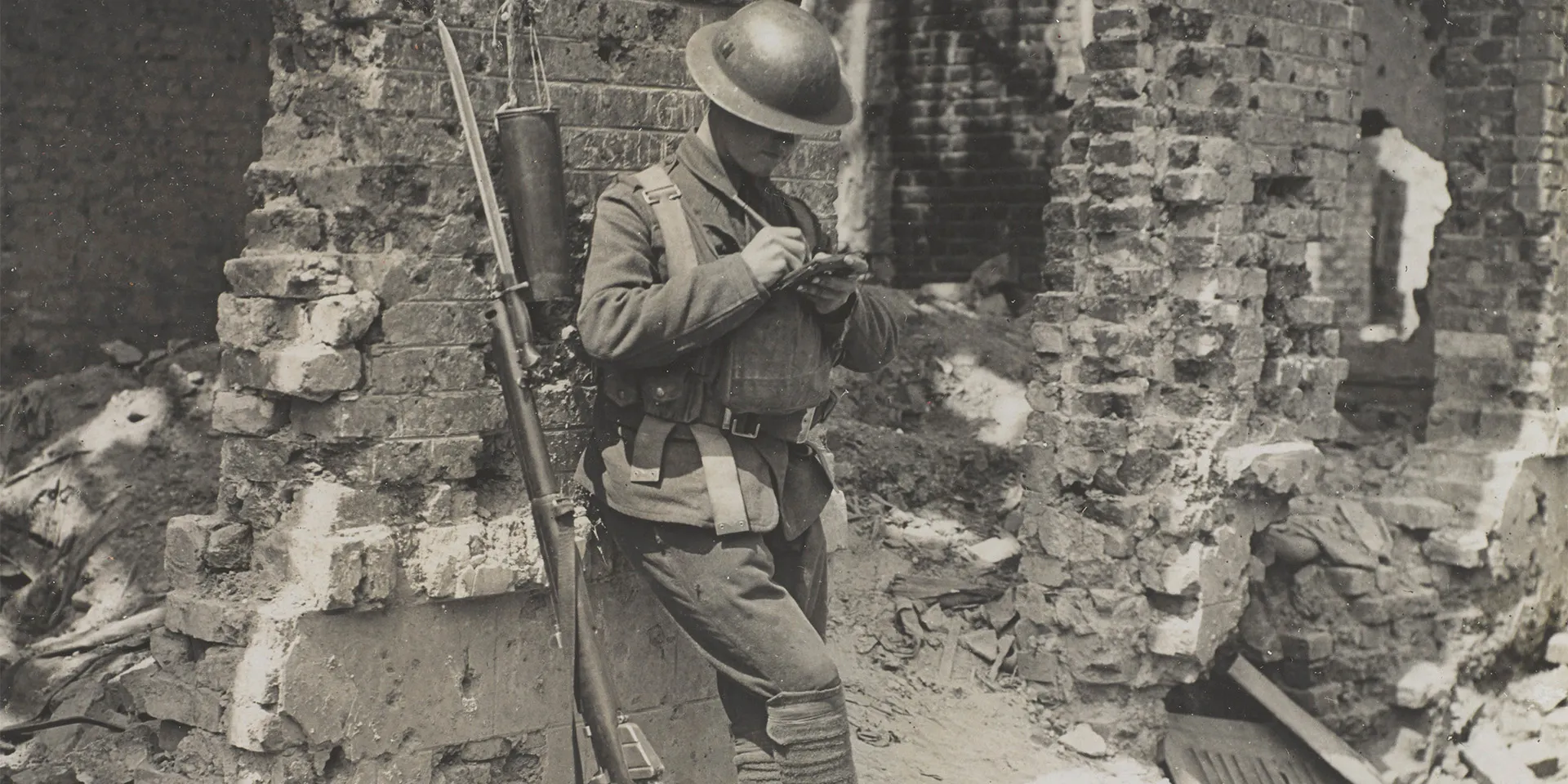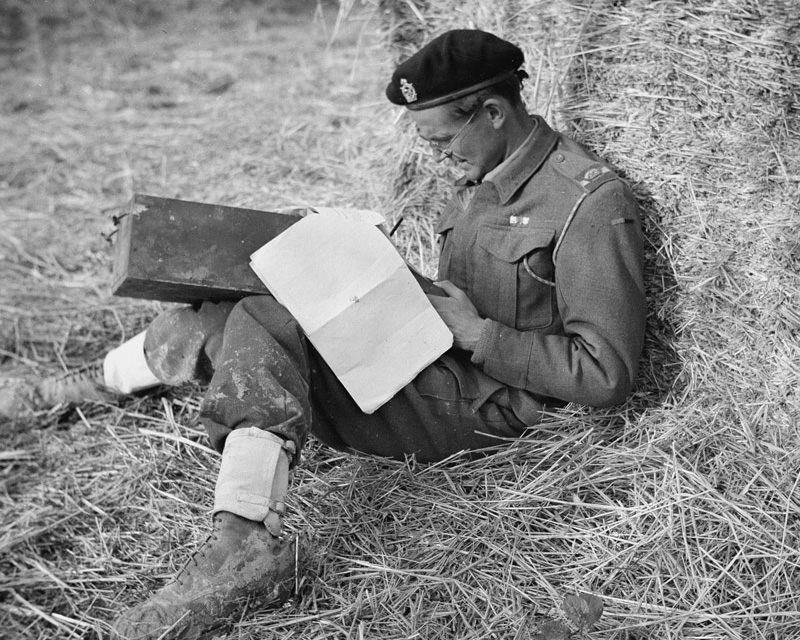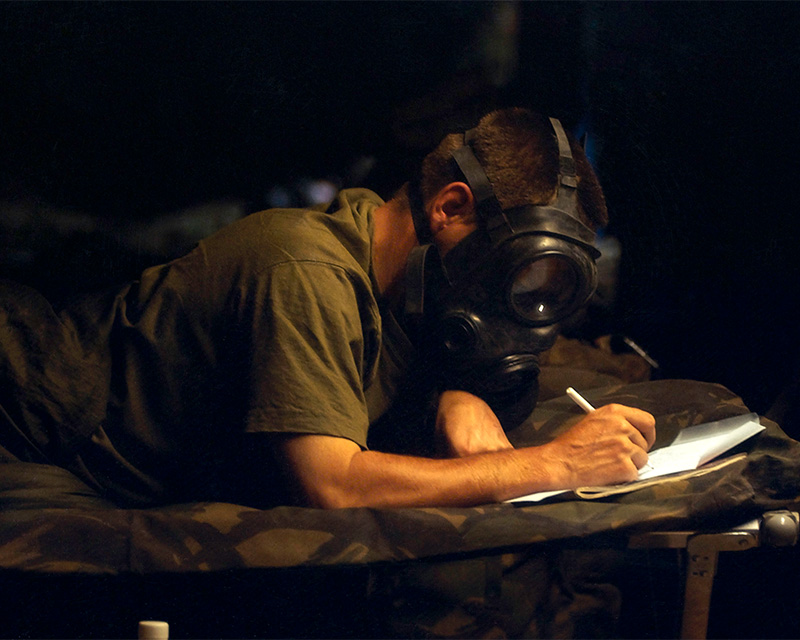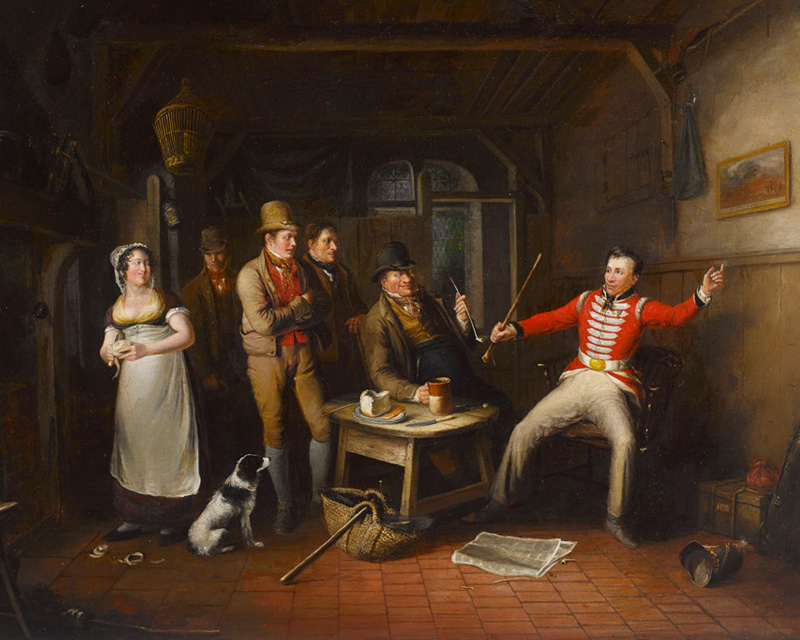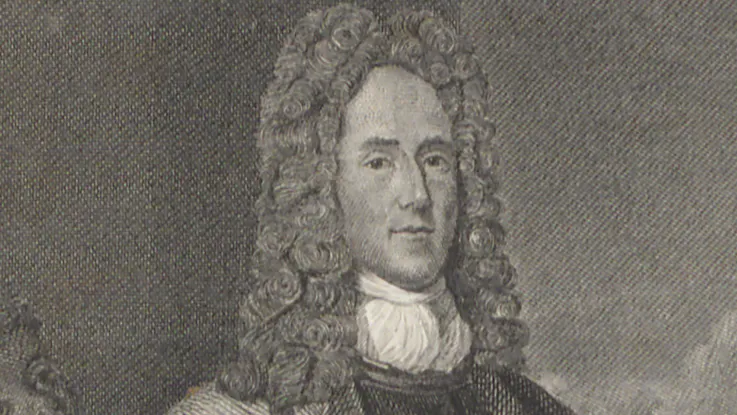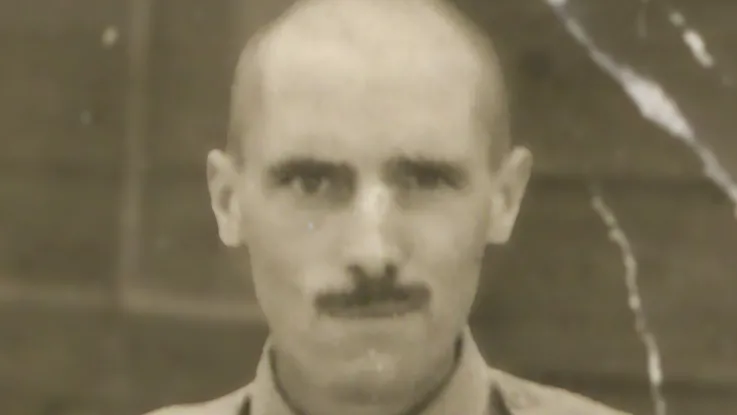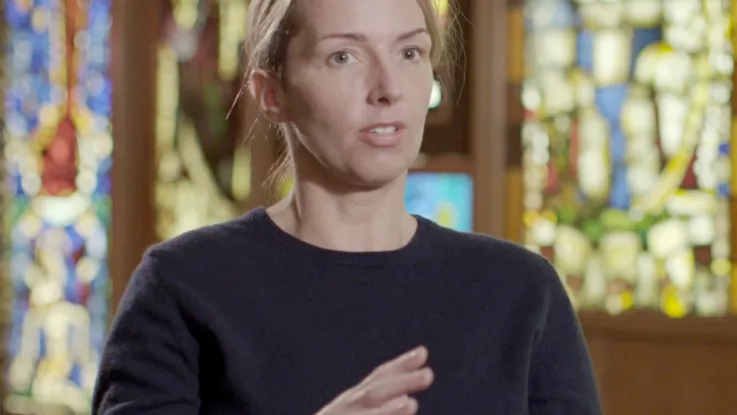Life stories
The National Army Museum has been collecting books and archives since its earliest days. Some of the most important are personal papers, such as letters, diaries and memoirs. More recently, we have collected oral histories – interviews recorded in both audio and video format. All of these sources are complemented by an ever-growing collection of film, photographs, artworks and personal objects.
Today, this unique collection of life stories covers hundreds of years of Army history, both at home and across the world.
‘At my first setting out in the world, a scene began to open, which seemed to promise very considerable events. From that time therefore I determined to enter down the most remarkable occurrences as they happened, as well as the various scenes and hazards through which I should pass; and this purely for my own use and amusement.’Captain Robert Parker's memoirs — 1742
Diaries
Diaries are often intimate and revealing documents. They can contain a wealth of eye-witness information, from the minutiae of everyday life to major historical events. They are also a space for reflection, providing a window into their author’s innermost thoughts and feelings.
Free from hindsight or the distortion of memory, they can give us an insight into events as they were perceived at the time, helping us to understand the past as lived experience.
Soldiers have often been keen diarists. Many drew inspiration from the great events they witnessed or the places they visited. Others found comfort in reflecting upon the many hardships and horrors they endured.
The Museum holds over 2,000 unpublished and over 700 published diaries and journals. These include the journal of Captain Louis Nolan, which provides important contextual information for the infamous ‘Charge of the Light Brigade’ during the Crimean War (1854-56).
‘Paper and Ink in my hand cannot tell of the infinite variety of things that I saw or of the many complex feelings I had. I loved it all, I seemed to find a new life and vigour, at the same time wondering and occasionally thinking that it was perhaps a dream.’Captain John Halsted, recounting his experiences in South Africa, en route to the Western Desert — 1941
Memoirs
Military memoirs started to become popular in Britain in the years following the British Civil Wars (1642-51). Over the centuries, their style evolved along with wider changes in society and literary culture.
The Romantic period of the late 18th and early 19th centuries saw a dry grand-narrative style replaced by livelier personal stories, which emphasised tales of hardship, suffering and adventure. After the First World War, a new generation of soldier-writers focused upon the horror of industrial war.
Like diaries, memoirs can help us understand how soldiers have interpreted their experiences. But they are often written long after the events they describe, which can compromise their reliability as historical sources. In published versions, this problem can be exacerbated by the influence of editors and the publishers' need to sell books.
The Museum holds over 1,500 memoirs, both published and unpublished. These include a signed first edition of Siegfried Sassoon’s ‘Memoirs of an Infantry Officer’, which complements a set of military notebooks that he kept during the First World War.
Letters
Letters offer soldiers a way to record their experiences and provide a comforting link with home. Advances in postal communications during the 19th century enabled soldiers to stay in regular touch with family and friends across vast distances.
However, these letters sometimes contained frank details about operations that could undermine support for the Army at home or reveal information that could be helpful to the enemy. Consequently, a system of censorship for soldiers’ mail was introduced during the First World War.
The Museum holds over 3,000 collections of letters, which constitute tens of thousands of individual letters, along with approximately 400 volumes of published soldier letters.
Among them are many examples of correspondence between senior commanders and statesmen, which shed light on the decision-making that shaped the outcome of military campaigns. The letters of the ordinary rank and file, meanwhile, tell us a great deal about the everyday experience of soldiering. Particularly poignant are letters delivering news of death or injury to loved ones.
‘What shall I say to you, my sweet beloved wife, for when, and if you get this letter, I shall no longer be with you?’Major General Arthur Money, in a letter to be delivered to his wife in the event of his death — 1915
Oral histories
Spoken testimony provides some of the most vivid insights into the lives of soldiers. Oral histories, although subject to the vagaries of hindsight and memory, can also be powerfully expressive and can communicate an emotive understanding of the past.
The Museum has been collecting oral histories for over 30 years. The first major project focused upon the officers of Britain’s Indian Army, whose service had ended over 40 years earlier. Since then, testimonies have been collected from many different service personnel, from soldiers of Black and Asian heritage to the men and women who dealt with improvised explosive devices (IEDs) and their impact during the conflicts in Iraq and Afghanistan.
Many of these interviews were conducted with soldiers who had suffered or witnessed traumatic injuries. As such, they bring into focus the sensitivity often required for this kind of collecting work.
The rise of the internet and digital technology during the 21st century has led to a dramatic reduction in the creation of traditional hand-written archival sources like letters and diaries. This makes the work of recording oral histories ever more important.
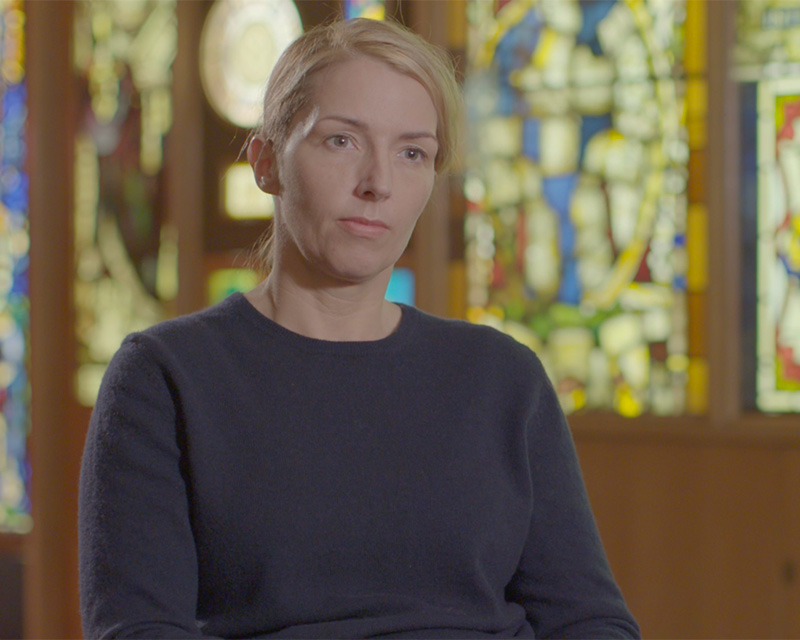
Oral history recording with Chantelle Taylor, 2016
Access to the Archive
The National Army Museum provides public access to its library and archival collections via the Templer Study Centre. Over the coming weeks and months, we will be sharing new stories across our website and social media channels, highlighting some of the valuable personal insights these collections hold.

